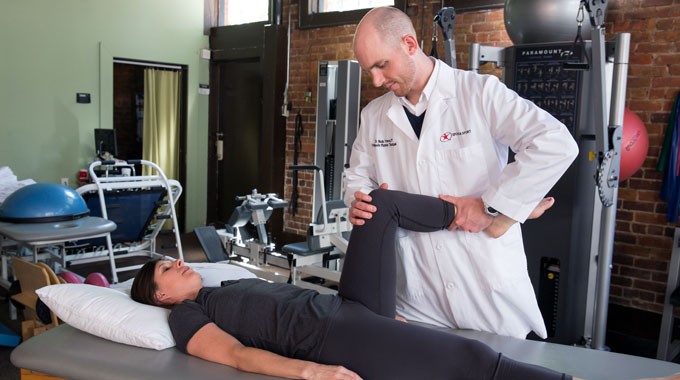If asked, would you know the difference between a physician, chiropractor, or a physical therapist? When you can go to any of the three for a symptom, such as back pain, it can be difficult to see why you might choose one over the other. To really understand the difference, we will break down each professions theoretical philosophy.
Physician
A physician—also known as a doctor of medicine, medical doctor, or simply doctor—practices maintaining or restoring human health through the study, diagnosis, and treatment of disease or injury. You may go to your physician when you feel sick, get injured, experience any unknown symptoms, or for annual checkups. A physician applies prior medical knowledge to accurately diagnose your ailment. They may prescribe medications for your ailment or may provide healthier lifestyle recommendations.
There are many different types of physicians who each have a specific scope of practice. It is common for a physician to refer you to another physician who specializes in another area. Examples of different physicians include pediatricians, internists, and surgeons, just to name a few. Just as physicians refer patients among themselves, physicians also refer to other medical experts such as a chiropractor or a physical therapist, dependent on the diagnosis and needed care.
Chiropractor
Chiropractic is a health care profession that diagnoses, treats and assists in the prevention of mechanical disorders of the musculoskeletal system, particularly the spine. It is believed that these disorders affect your general health via the nervous system. A chiropractor’s purpose is to restore function and stability to your spine. They do this by realigning the vertebrae in your spine using spinal manipulation. This releases tension in your spine, and allows for muscles to be relaxed. Pain associated with the misalignment, such as back pain, neck pain, and headaches, is relieved.
A chiropractor also affects your nervous system. The nervous system consists of your brain and spinal cord. The brain is at the very top of your nervous system, and the spinal cord runs down the length of your spine. Your nervous system controls every muscle, organ and cell of your body. With correct alignment of the spine, it allows the brain to talk to every part of your body which promotes better movement, balance, and nerve function.
Physical Therapist
Physical therapy is a health care profession that evaluates, diagnoses, and provides treatment to develop, maintain, and restore maximum movement and function throughout your life. A physical therapist provides treatment when your movement and function are threatened by aging, injury, disease or environmental factors. Components of movement and function that are evaluated by a physical therapist include strength, range of motion, flexibility, balance, posture, body mechanics, coordination, endurance and general mobility such as walking, stair climbing, and getting in and out of a chair or bed.
A physical therapist evaluates the components of movement and develops an individualized program to restore your function. A physical therapist will help you with:
- Orthopedic conditions such as low back pain or osteoporosis
- Joint and soft tissue injuries such as fractures and dislocations
- Neurological conditions such as stroke and Parkinson’s disease
- Workplace injuries including repetitive stress disorders and sports injuries
Physical therapy treatment programs consist of educating you about the cause of the problem, “hands on” manual techniques and instructions in exercise to improve function.
This Post Has One Comment
Comments are closed.







Pingback: Understanding Differences in Physical Therapy & Chiropractic Care